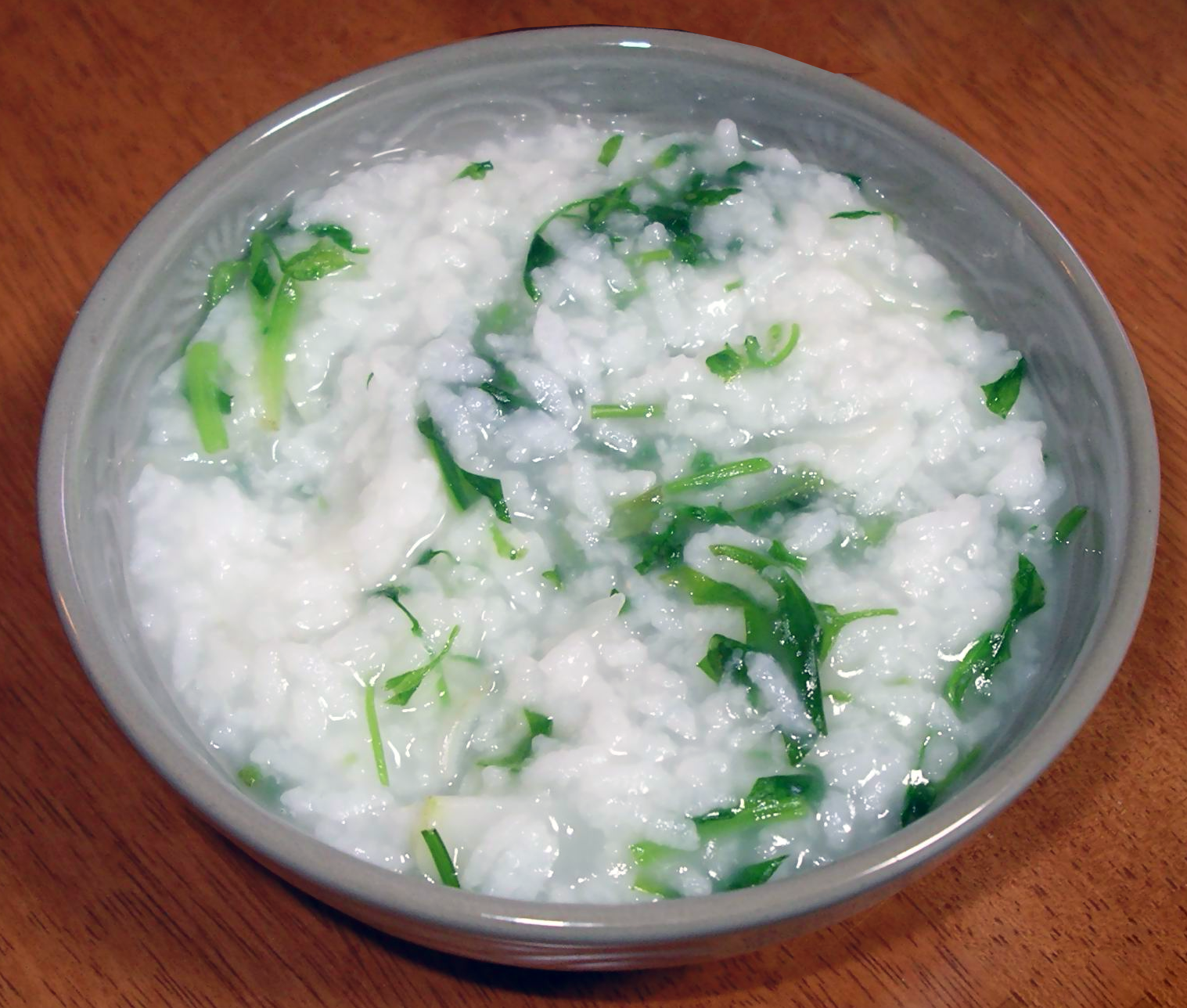
 Click on the image, above to submit to Pinterest.
Click on the image, above to submit to Pinterest.
Nanakusa-gayu (Seven Herb Congee)
Nanakusa-gayu (Seven Herb Congee) is a traditional Japanese recipe for a classic New Year breakfast dish or rice and daikon radish served with seven types of wild herbs. The full recipe is presented here and I hope you enjoy this classic Japanese version of: Seven Herb Congee (Nanakusa-gayu).
prep time
10 minutes
cook time
35 minutes
Total Time:
45 minutes
Serves:
4
Rating: 
Tags : Wild FoodVegetarian RecipesJapan Recipes
Nanakusa Gayu (七草粥) is a New Year breakfast dish in Japan, typically served on the 7
th of January. The idea is that the comforting okayu allows the stomach to recover from the feasts of the Japanese holiday.
The traditional seven herbs used are: Water dropwort (Oenanthe javanica subsp. stolonifera) – Seri (せり); Shepherd’s purse (Capsella bursa-pastoris) – Nazuna (なずな・ぺんぺん草); Cudweed (Gnaphalium affine) – Gogyo (ごぎょう); Chickweed (Stellaria media) – Hakobera (はこべら); henbit dead-nettle (Lamium amplexicaule) – Hotokenoza (ほとけのざ); field mustard (em>Brassica campestris ssp. rap) – Suzuna (すずな・かぶ) and Daikon radish (mooli) – Suzushiro (すずしろ・大根). In Japan, these are solt together as a package ready for preparing the congee.
Turnip greens are often substituted for the field mustard, but any mustard greens would work. Mugwort (Artemisia vulgaris) is a common substitute for the cudweed. This only left water dropwort as being unavailable for the European forager. After a bit of research and asking a friend's Japanese wife I learnt that chrysanthemum greens are a common substitute (and generally available in Japanese markets). As a forager, I typically substitute oxeye daisy greens for these, so I was all set. Typically only a few sprigs of each of the greens is used.
Ingredients:
150g (¾ cup) uncooked Japanese short-grain white rice
1l water
3cm length of daikon radish
For the greens:
3 tbsp
oxeye daisy greens
3 sprigs
shepherd's purse greens
2 sprigs
mugwort greens
3
chickweed plants
3 sprigs
henbit deadnettle
4 leaves
field mustard (or any mustard greens)
3 daikon radish leaves
½ tsp sea salt (divided; plus more, to taste)
2 pieces Mochi (Japanese rice cake) (optional)
To Serve:
condiments of your choice (optional; typically salty condiments like tsukemono, simmered kombu, or umeboshi)
Method:
Wash the Japanese short-grain white rice thoroughly, then drain well in a fine-meshed sieve. Transfer the well-drained rice to a cast iron casserole (Dutch oven) then add the 1l water (if you like your rice mushier, set aside to soak for 30 minutes at this point).
When ready to cook, place the pot of rice over medium heat then bring to a boil, stirring occasionally.
As soon as the rice is boiling, reduce the heat to low and gently mix once with a spoon, making sure the rice is not sticking to the base of the pot. Cover the pot with the lid set slightly ajar (to avoid boiling over) and cook for 30 minutes. Do not open the lid or stir while cooking. Note that if you soaked the rice for 30 minutes, you can shorten the cooking time by 5–10 minutes.
In the meantime, prepare the daikon and greens. Bring a medium-sized saucepan of salted water to a boil. Peel the daikon radish and cut it into quarters lengthwise. Then, cut each piece crosswise into 3mm thick slices.
When the water is boiling, add half the salt and the daikon. Blanch for 4-5 minutes, until just tender. Remove the daikon pieces with a slotted spoon and set aside, but keep the water boiling.
Take each of your seven greens and divide into three pieces, crossways. Add to the boiling water and blanch 20–30 seconds. The salt in the water will reduce bitterness and will keep the green colour bright.
Drain and immediately transfer the greens to iced water. Once cooled, squeeze out any excess water then cut into 12mm pieces. Don‘t let the greens soak in water too long, otherwise they will become overly limp.
After cooking the rice for 30 minutes (or 20–25 minutes if you pre-soaked the rice), check the consistency. It should be thick and soupy, not pasty. If it‘s too thick, you can add water. Season it with the remaining salt and check the taste. You can always add more salt later.
Add the greens and daikon and stir to mix. Turn off the heat and cover tightly, then allow to rest and steam for 5 minutes.
If you are adding mochi to the rice porridge, cut 2 pieces of the mochi (Japanese rice cake) in half and toast them in a frying pan or toaster oven until golden and puffed up.
Serve the rice mixture immediately in individual rice bowls, topped with the toasted rice cake pieces (if using). Accompany with salty condiments such as tsukemono, simmered kombu (tsukudani), or umeboshi.

 Click on the image, above to submit to Pinterest.
Click on the image, above to submit to Pinterest.